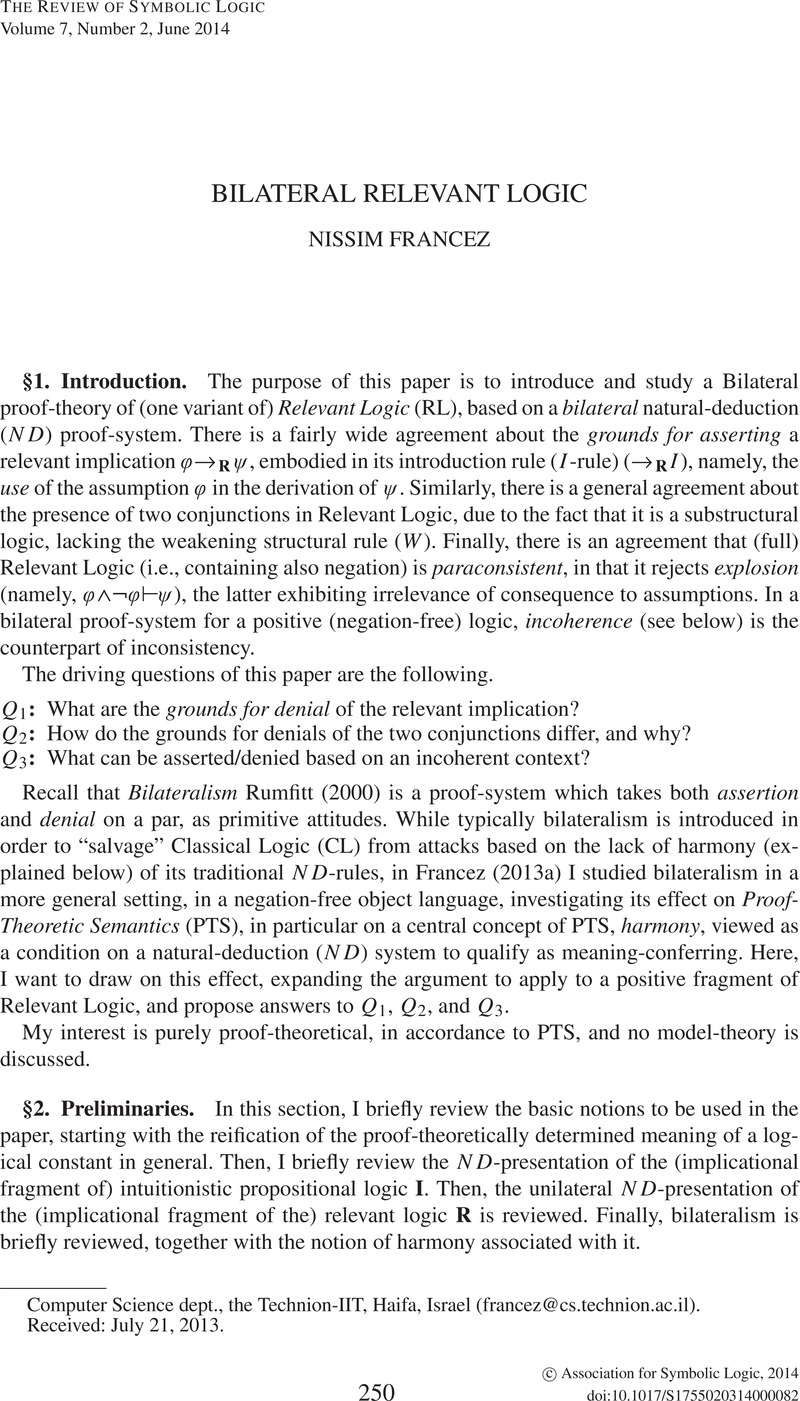Crossref Citations
This article has been cited by the following publications. This list is generated based on data provided by Crossref.
STANDEFER, SHAWN
2021.
TRANSLATIONS BETWEEN LINEAR AND TREE NATURAL DEDUCTION SYSTEMS FOR RELEVANT LOGICS.
The Review of Symbolic Logic,
Vol. 14,
Issue. 2,
p.
285.
Wansing, Heinrich
and
Ayhan, Sara
2023.
Logical Multilateralism.
Journal of Philosophical Logic,
Vol. 52,
Issue. 6,
p.
1603.



